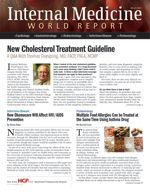Publication
Article
Internal Medicine World Report
Pre-Op Intra-Aortic Balloon Pumps Improve Coronary Artery Bypass Grafting Results
Author(s):
Though most studies on the preoperative use of intra-aortic balloon pumps in coronary artery bypass grafting patients have reported early results, they have not been able to determine long-term outcomes.

Though most studies on the preoperative use of intra-aortic balloon pumps (IABP) in coronary artery bypass grafting (CABG) patients have reported early results, they have not been able to determine long-term outcomes. In addition, some surgeons have been deterred from using IABP in high-risk patients due to reports of higher complication rates.
To set the record straight, a team of Israeli cardiac clinicians evaluated early and long-term results of preoperative IABP use. Of the 2,658 isolated CABG procedures the authors examined, 215 (8%) were supported preoperatively with an IABP. IABP insertion was indicated if the patient had cardiogenic shock (8.4%), acute evolving myocardial infarction (MI) (17.7%), clinical instability (39.1%), or critical coronary lesions (34.9%).
More than 12% of the patients died during surgery. In addition to patients who were older or had longer cardiopulmonary bypass (CPB) operative times, those with cardiogenic shock had the greatest mortality risk.
IABP-supported patients who had more bypass grafts experienced less in-hospital mortality, while patients with fewer grafts were more likely to die. The researchers suggest 2 explanations for this trend: the patients may have had (1) more diffuse disease, which would limit the number of grafts that could be performed, or (2) incomplete revascularization. Peripheral vascular disease, off-pump coronary artery bypass surgery, age, CPB time, female gender, and fewer bypass grafts were all associated with decreased survival.
When IABP was used preoperatively, younger patients and those with shorter CPB times or a greater number of bypass grafts had better early and long-term results. For emergency cases, the researchers supported using off-pump CPB.






